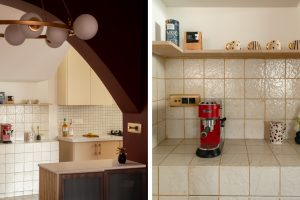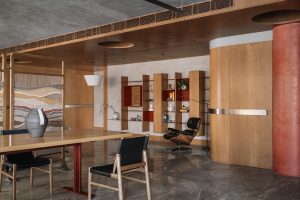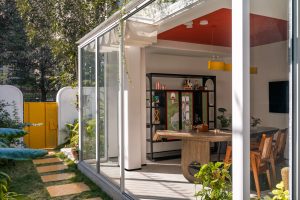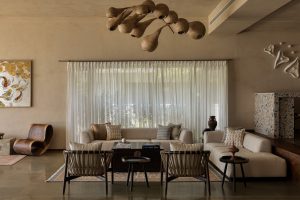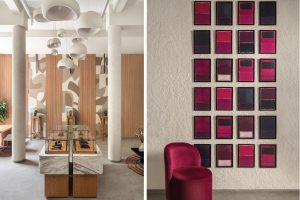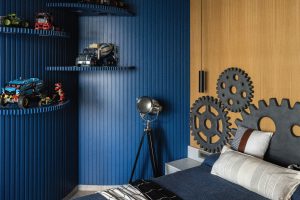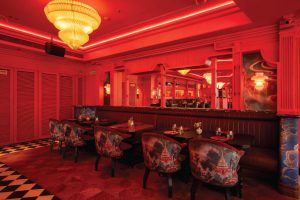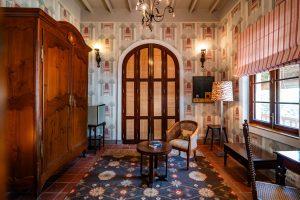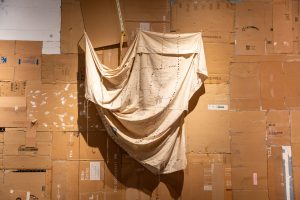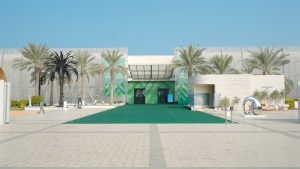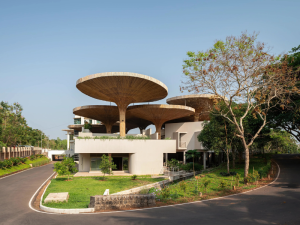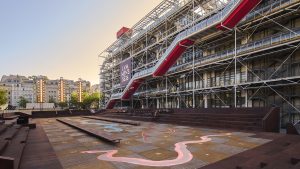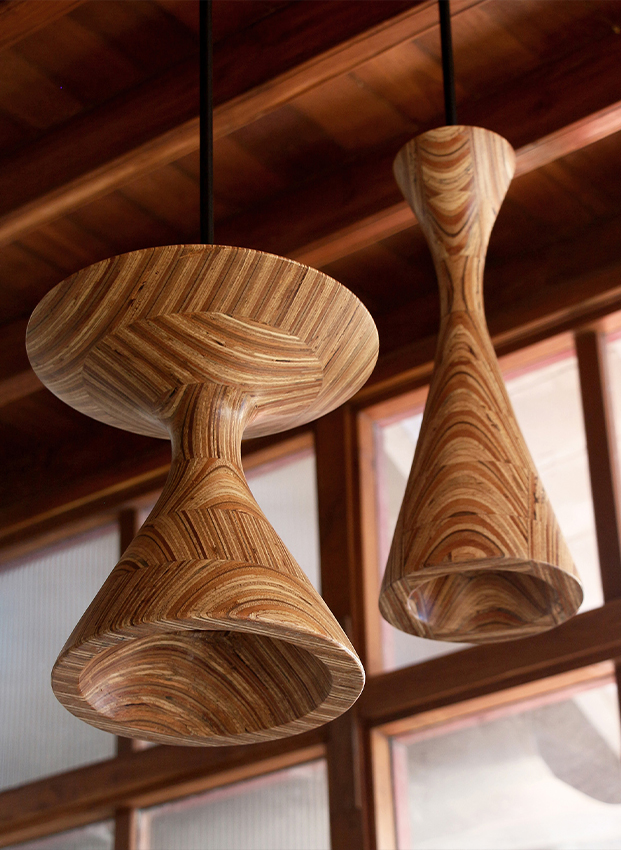All Roads Lead To Milan: 5 Must-Visit Shows At Milan Design Week 2025
From utilitarian essentials to multisensory spectacles, Milan Design Week 2025 dazzles as a crucible of design alchemy. DP handpicks five must-visit showcases that capture the city’s eccentric spirit.
- 9 Apr '25
- 4:20 pm by Simran Almeida
Every year in April, Milan swaps espresso for eccentricity as the global design spectacle rolls into town. Milan Design Week unfolds in two distinct and comprehensive acts—Salone del Mobile. Milano, the eminent fair at Rho Fiera, and the Fuorisalone, a constellation within the most significant design districts, with immersive exhibitions and conceptual installations. While Milan Design Week unfurls across the city, transforming storied palazzos, galleries, and even cobbled streets into ephemeral exhibition spaces, it blurs the lines between art, architecture, and ingenuity. DP rounds up 5 must-visit installations for a discerning dose of spatial drama, ingenious craftsmanship, and immersive storytelling.
1. Mother By Robert Wilson At Museo Pietà Rondanini
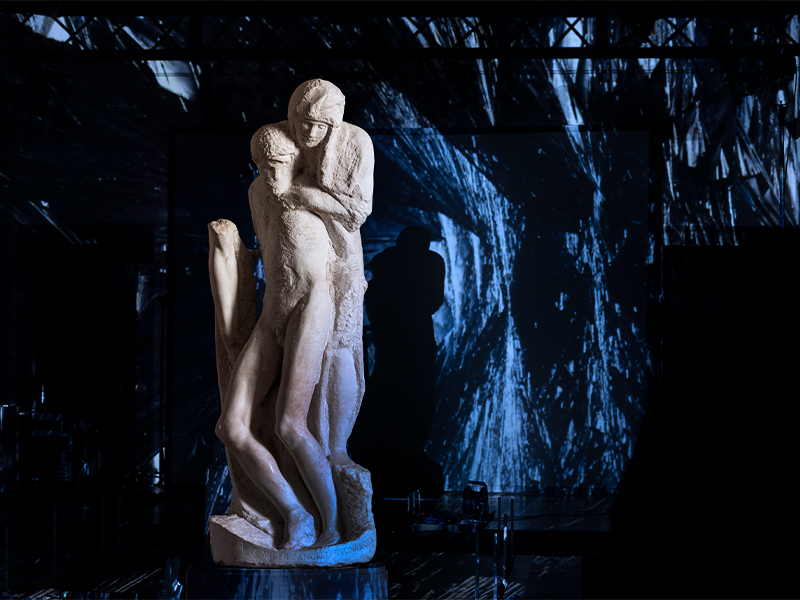
Art can collapse time, dissolve perception, and alter the act of viewing. Enshrouded in spectral chiaroscuro and born from the singular vision of Texan director and playwright Robert Wilson, ‘Mother’ at the Museo Pietà Rondanini, Milan, transcends the conventions of performance to become a liminal experience. As in a dreamscape, this immersive show commences in pitch darkness, where Michelangelo’s unfinished sculpture ‘Rondanini Pietà’ is slowly revealed through the soft alchemy of light and silence. “When I first saw the Pietà Rondanini, I sat in front of it for more than an hour. Then I started walking around it. I felt a powerful energy, an almost mystical presence,” says Robert Wilson.
The performance drifts in a spell of delayed perception, where the sculpture, unresolved and stripped of completion, embodies a recurring motif of duality: presence and absence, shadow and form. Curated by Franco Laera and co-produced with the Municipality of Milan for Salone del Mobile.Milano 2025, Wilson’s vision in Mother becomes a portal that channels the metaphysical tremors of Michelangelo’s last work into a sensorial meditation. In the year of Euroluce, it parlays as both memorial and mirror—refracting time, space, and sorrow into meditative dissonance because, as Wilson says, “Light is what shapes space. Without light, space doesn’t exist.”
2. Drift Us By Studio Drift X Audi At Portrait Milano Hotel
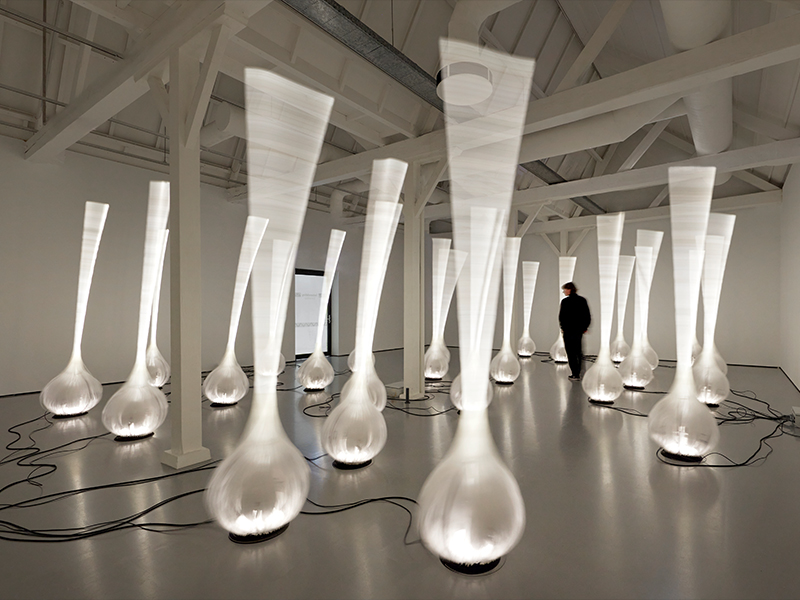
Movement, when pared down to its essence, transforms from mere motion into an undeniable presence. In keeping with this, beneath the vaulted tranquility of Portrait Milano’s courtyard, Drift Us by Studio DRIFT for Audi manifests as a choreography between human presence and kinetic response. Returning to Milan Design Week after a decade, DRIFT—the visionary Dutch duo of Lonneke Gordijn and Ralph Nauta, known for translating nature’s rhythms into immersive robotic installations—joins forces with Audi, the avant-garde automobile marque.
The installation borrows from the visitors’ kinesis, where their movement serves as a catalyst, stirring DRIFT’s kinetic field into motion. “Wind is the driving force of evolution and innovation in nature. Without movement, there is no progress,” reflect Lonneke Gordijn and Ralph Nauta. This installation turns the act of walking into a quiet revelation, where each step breathes life into a responsive landscape. Attuned to the body’s subtle cadences—pulse, breath, presence—the installation reimagines progress as something felt, not forced. Within Audi’s House of Progress, innovation unfolds not in speed but in stillness. Here, dichotomy dissolves—spectator becomes spectacle, stillness transforms into surge.
3. Bread And Butter By Faye Toogood At Largo Treves

In the quotidian, time-honoured ritual of breaking fast—tearing a warm bread and caressing a curl of butter across its surface—British designer Faye Toogood of Toogood Studio borrows from the poetry of the domestic. This is the genesis of ‘Bread and Butter,’ a new collection she crafted for Tacchini within their first brand showroom at Largo Treves 5—an early 20th-century Milanese residence left affectionately intact. Within this revered apartment, ‘Bread and Butter’ finds its place as a meditation on the warmth of everyday architecture. In Toogood’s hands, furniture becomes an artifact, tactile in this collection shaped by touch.
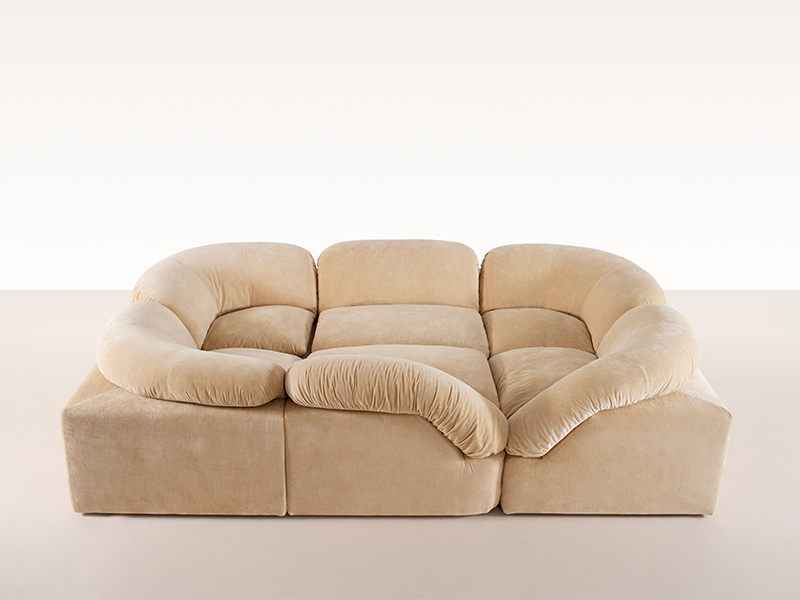
The Butter Sofa, a modular system first shaped from Cornish butter; the Console and Side Tables, born from sliced ciabatta and stacked sourdough, are manifested in stained ash and maple. With each curve, corner, and inlay, this collection invokes a tactile memory—a quiet echo of human touch. From the Butter Sofa to the Console and Side Tables, Toogood’s collection for Tacchini turns everyday rituals into sculptural reverie. Upholstery drapes like batter over plush, monolithic forms made for play. The Console, with its pale primrose inlay, recalls a slice of buttered toast—nostalgic, poised, while the Side Tables, shaped from stacked sourdough, evoke both functionality and artistic flair. Together, they form a tactile ode to nourishment, memory, and the poetry of the everyday.
4. Library Of Light By Es Devlin At Cortile d’Onore Plazzo
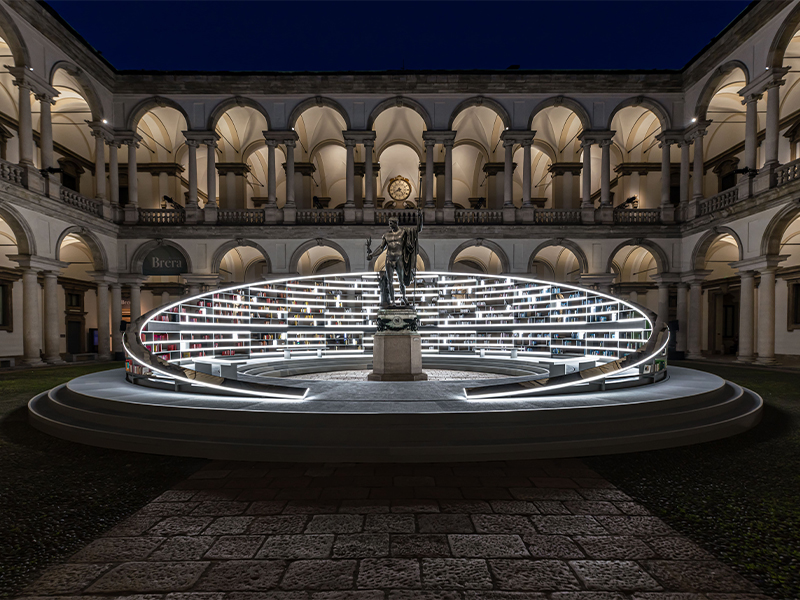
In the revered courtyard of the Cortile d’Onore, where time itself seems to echo in marble and shadow, a living alliance between thought and memory transpires. Aptly monikered, ‘Library of Light,’ this installation is crafted by Es Devlin—renowned British artist and scenographer, whose practice turns space into story and light into language. Commissioned by Salone del Mobile.Milano 2025, in collaboration with the Pinacoteca di Brera art museum and the Milan-based publishing house Feltrinelli, the immersive experience brews a revolution, embodying a phrase by Umberto Eco: “Books are the compass of the mind; they point to countless worlds yet to be explored.” Transforming stagecraft into experiential verse, Devlin’s luminous, rotating sculpture was conceptualised during a hike along the tall shelves of the Braidense National Library.
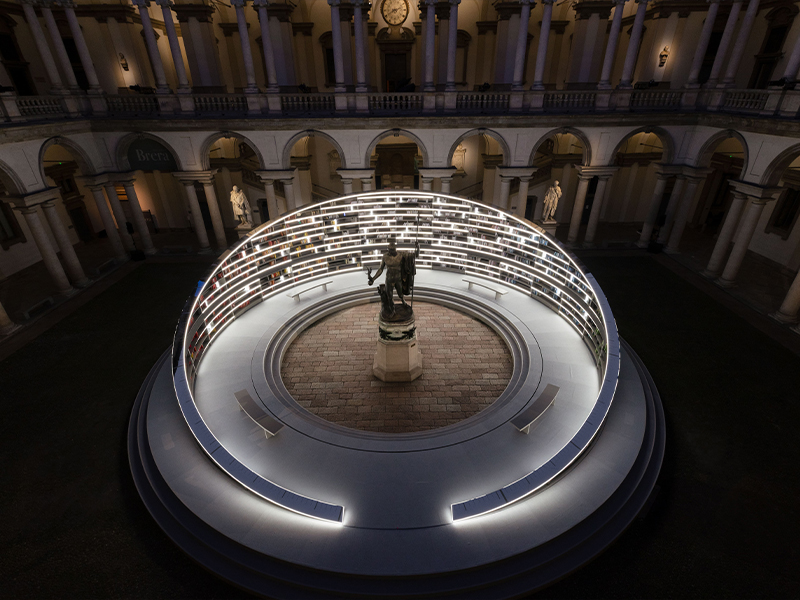
This artwork summons a kinetic totem of collective intellect—an 18-metre illuminated cylinder of turning bookshelves, filled with over 2,000 volumes. Orchestrating a choreography of ephemerality, the installation’s mirrored crown catches daylight like a lens, while tilting the light into the shrouded alcoves. At nightfall, it invites shadows to dance across stone. As its axis turns, recorded voices echo—from Benedict Cumberbatch lending gravitas to Carlo Rovelli’s ‘The Order of Time,’ to Devlin herself giving voice to the metaphysical writings of Maria Gaetana Agnesi’s ‘The Mystic Heaven.’ At 8 p.m. daily, the work ‘reads itself,’ LED text flowing like liturgy across its surface, while visitors browse and donate books—expanding the growing constellation of titles on the theme Thought for Humans.
5. Martian Veil By AB+AC Architects At Foro Buonaparte 68

Suspended between the elemental and ethereal, a structural element breathes, glows, and infuses perfumes into the air. At the storefront of Milan’s historic Foro Buonaparte, a site-specific installation by the Lisbon– and Milan-based studio AB+AC Architects materialises for Fantini Mosaici—an artisanal surface brand—marking the debut of its new Milanese showroom. Monikered ‘Martian Veil,’ this installation features a voluptuous terrazzo curtain wall, crafting the illusion of being suspended in time. It sets the stage for a material and sensorial narrative that embodies the brand’s philosophy.
Crafted with Italian stones like Rosso Verona, Rosso Francia, Verde Ming, and Giallo Siena, the installation transpires in fiery hues of rust while exuding an earthy vibe. The curved modules undulate in shape-shifting forms, catching and scattering light. Evoking ethereal forms, the wall transcends the visual, with notes of eucalyptus, incense, and forest wood shaping an olfactory encounter and an immersive experience. Beyond Milan Design Week, this wall appears in hyper-realistic renders—a sculptural fireplace in a suspended villa, a 28-metre monolith in a mountain retreat—which are on display at the store. In an ode to enduring artisanal craft, terrazzo ceases to be mere material—transforming into terrain, memory, and spell.
6. Bamboo Encounters By Gucci At Chiostri di San Simpliciano
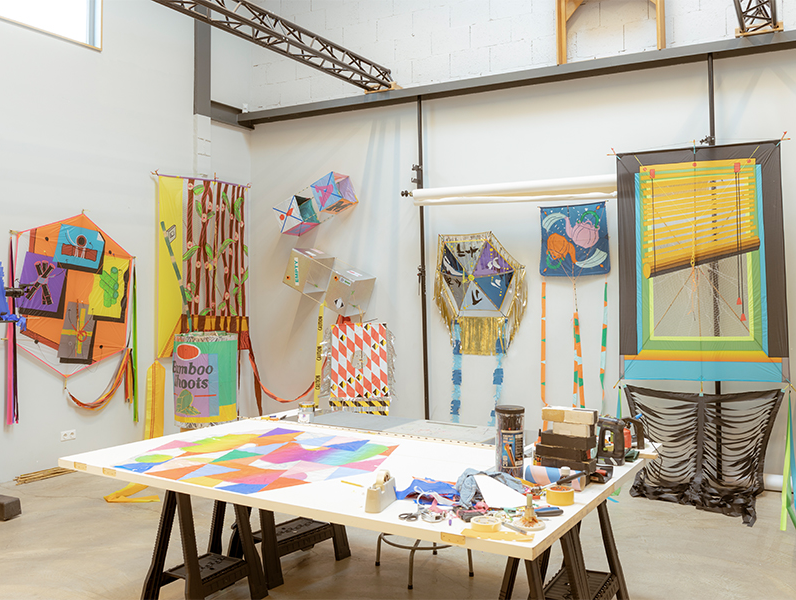
What unfolds when a naturally versatile material collides with design’s eccentric imagination? Gucci’s ‘Bamboo Encounters’ offers the perfect answer within Milan’s 16th-century Chiostri di San Simpliciano. With the storied cloisters corralling the courtyard, this immersive showcase traces bamboo’s legacy within Gucci’s universe—first introduced in the 1940s as an ingenious response to wartime scarcity, and eventually enshrined as a timeless house icon. It first appeared in 1947 on the Gucci Bamboo bag. Rooted in craftsmanship, the exhibition unfolds as a spatial symphony, where this modest, ancient material shape-shifts as a protagonist, bridging the colossal gap between heritage and artistic flair.
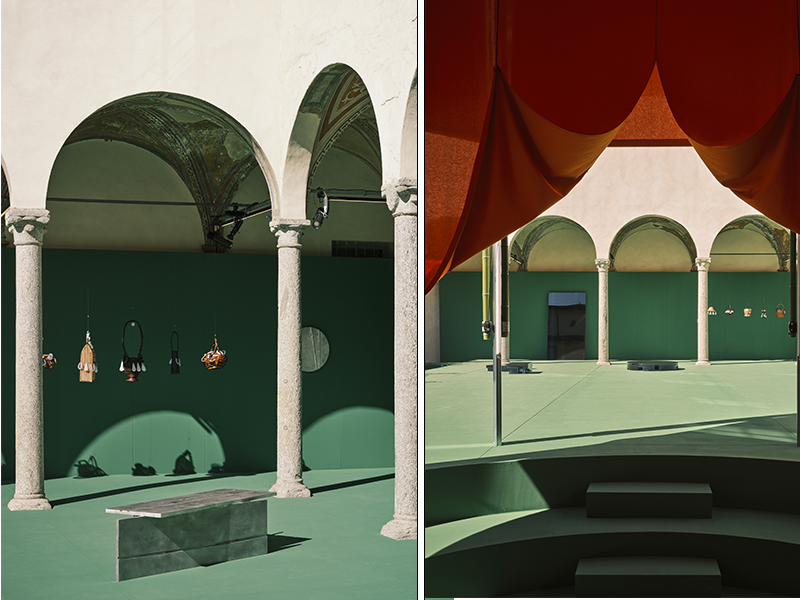
Conjuring an immersive portrait of bamboo, this showcase was designed by architect Ippolito Pestellini Laparelli of 2050+, an interdisciplinary studio, and features fresh interpretations of bamboo by various designers as an entity that underscores its form, fragility, and force. From the Swedish-Chilean artist Anton Alvarez’s sculptural whirl—capturing bamboo’s native curvature—to Palestinian architect Dima Srouji’s ‘Hybrid Exhalations,’ where ancient vessels encounter mouth-blown glass, each work unveils a new facet of this material. Further, the Dutch collective Kite Club ingeniously sends bamboo skyward in ‘Thank you,’ while the Austrian designer Laurids Gallée translates bamboo’s structural potential into resin, transforming its inherent tension into translucent furniture. Milan-based artist and designer Nathalie Du Pasquier weaves bamboo and silk into patterned canvas in ‘Passavento,’ while Seoul-based artist Sisan Lee blends Korean heritage with minimalism in engraved aluminium. In ‘Bamboo Assemblage n.1’, The Back Studio, founded by artists and designers —Turin-based Eugenio Rossi and Mumbai-based Yaazd Contractor—chisels a sculptural memory of light and shadow.

